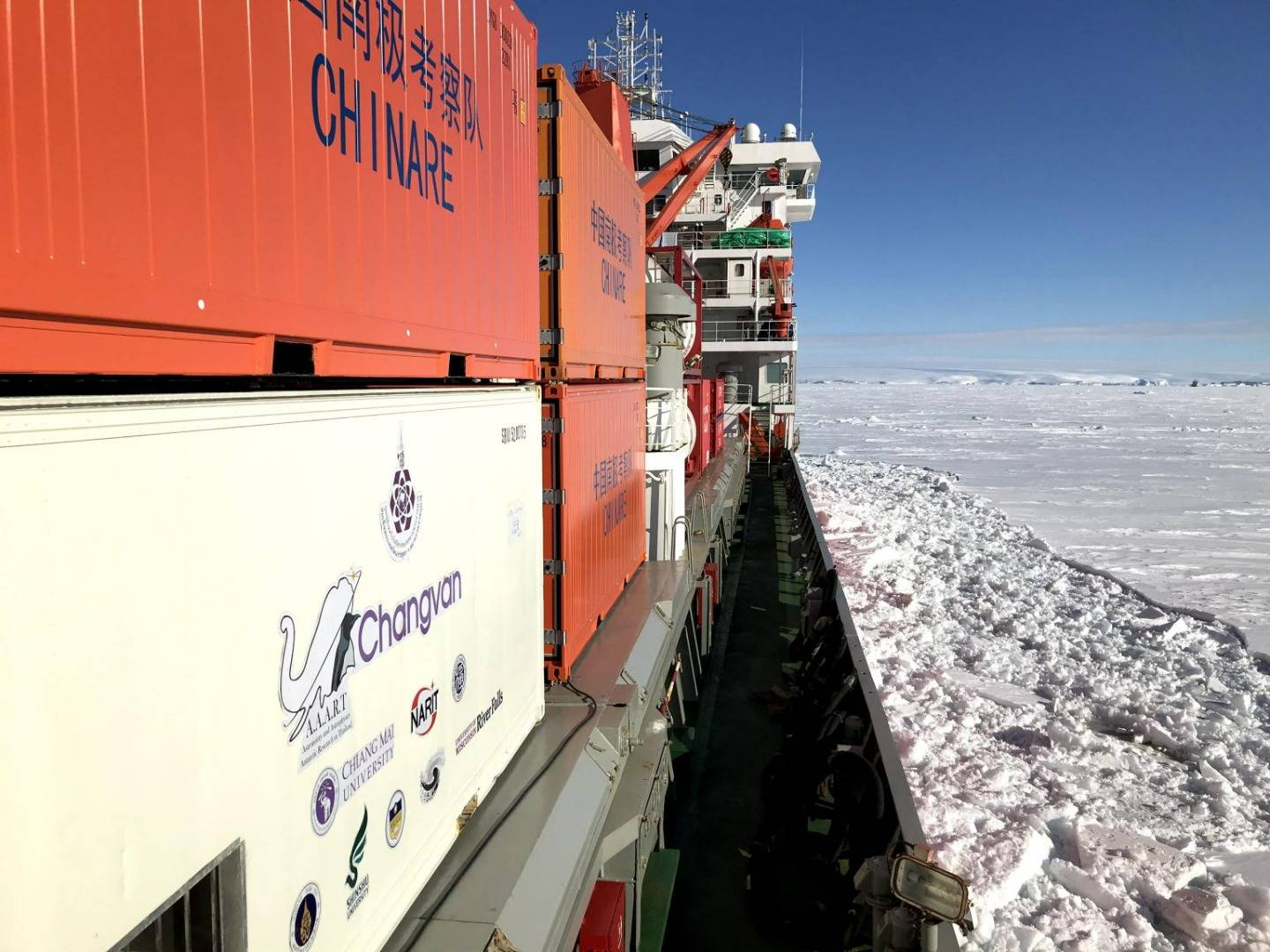The collaborative project between Thailand and the People's Republic of China aims to conduct research in astronomy and atmospheric science in the polar regions. The polar regions offer suitable conditions for observing phenomena in astronomy and atmospheric science that require extended and uninterrupted observation periods. By leveraging this cooperation, Thailand seeks to enhance its knowledge base and develop its personnel in order to maximize the benefits for the country's development.
Background
The collaborative efforts led by His Royal Highness Prince Kanitthathirachao, Her Royal Highness Princess Maha Chakri Sirindhorn, and the National Astronomical Research Institute of Thailand (NARIT) in cooperation with the Polar Research Institute of China (PRIC) mark a significant initiative in the field of astronomy and atmospheric science in the polar region.
In 2016, NARIT signed a cooperation agreement with the Polar Research Institute of China (PRIC) and became a member of the Scientific Committee on Antarctic Research (SCAR), reflecting a commitment to advancing scientific exploration in the South Pole.
As part of this collaboration, NARIT, in conjunction with Chiang Mai University, worked with the Polar Research Institute of China to send Thai astronomers and neutron particle measuring equipment. This equipment, packed inside an insulated container named 'Changvan,' was transported aboard the research survey ship 'Xue Long' (Snow Dragon Boat) during the 36th South Pole Research Expedition of the People's Republic of China (CHINARE-36). The journey took the team from Shanghai to China's Zhongshan Research Station in Antarctica.

The primary focus of this research expedition was to collect data on the concentration of neutron particles that can pass through Earth's atmosphere. Understanding the origin and behavior of neutrons is crucial, as these particles directly influence the space environment. The information gathered contributes to fundamental knowledge that can aid in the development of a stable telecommunications system and, ultimately, enhance the quality of life for humanity in the future.
This collaborative endeavor showcases the commitment of the Thai and Chinese institutions involved to contribute to scientific understanding, promote international cooperation in polar research, and pave the way for advancements in technology and quality of life for future generations.
Key aspects of the Polar Astronomy and Science Project:
1. Observational Astronomy: The polar regions offer clear and uninterrupted views of the sky for extended periods, making them suitable for observational astronomy. Researchers may study celestial phenomena, such as stars, galaxies, and cosmic events, taking advantage of the reduced atmospheric interference in these remote locations.
2. Atmospheric Science: The unique atmospheric conditions in polar regions make them crucial for studying various atmospheric phenomena. This includes research on climate patterns, atmospheric composition, and other meteorological factors. Understanding the polar atmosphere contributes to broader knowledge about global climate systems.
3. Marine Biology and Oceanography: While not exclusively related to the polar regions, collaboration in marine biology and oceanography could involve studying the interactions between polar oceans and marine life. This interdisciplinary approach may provide insights into the broader effects of climate change on polar ecosystems.
4. Geophysics and Geochemistry: Research in polar regions can contribute to geophysical and geochemical studies. This may involve investigating the geological features of the region, studying the Earth's magnetic field, and exploring the composition of the polar terrain.
5. Capacity Building and Knowledge Transfer: The collaborative effort likely involves knowledge exchange and capacity building between the participating countries. This may include training programs, joint research initiatives, and the development of human resources in the fields of astronomy and atmospheric science.
The overall goal of the Polar Astronomy and Science Project is to leverage the unique characteristics of the polar regions for scientific exploration and discovery. Through international collaboration, the project aims to advance our understanding of various natural phenomena, contribute to global scientific knowledge, and benefit the participating countries in terms of research capabilities and human resource development.
